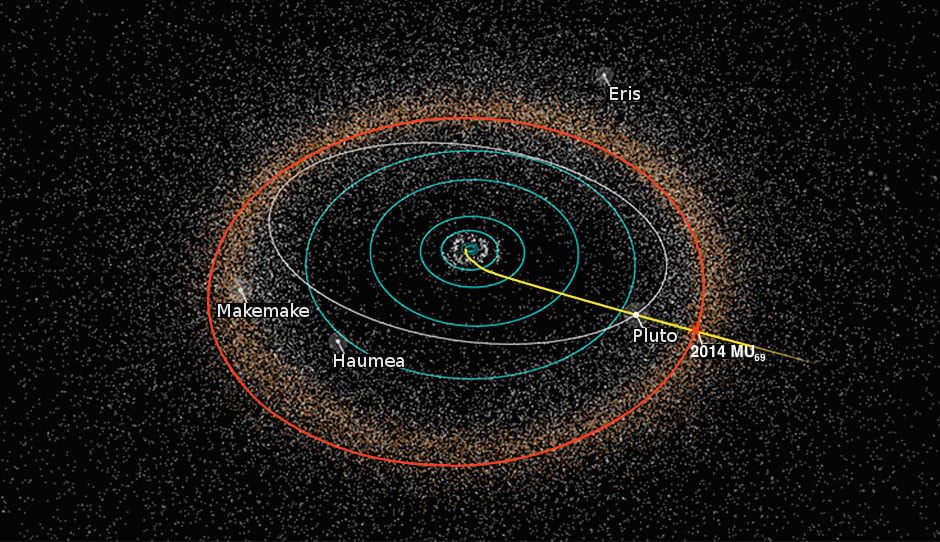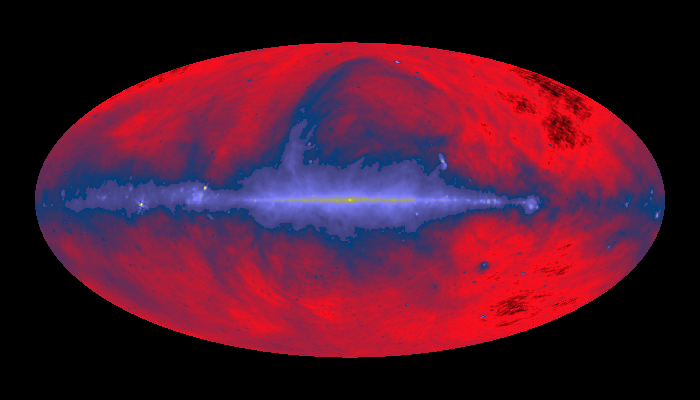
In the outer region of our Solar System lie four giant planets - also known as Jovians. And beyond our Sun, thousands more are being found...
Continue reading

The Moon makes a close pass near Jupiter this weekend and occults it for observers in the southern Indian Ocean region.
Continue reading

Based on our current growth in energy usage, how long will it take before we use up all the energy of our planet, of our star, or even all the energy in our galaxy?
Continue reading

Since time immemorial, humans have known that the Sun will rise in the east and set in the west. But why exactly does it happen this way?
Continue reading

Continue reading

Located between 5,000 and 6,000 light years from Earth is the Omega Nebula, one of the brightest and most massive star-forming regions in our galaxy
Continue reading

A recently released catalogue showing the results of a Herschel survey has revealed how stars have cleaned the universe over billions of years
Continue reading

Our guide to earth at aphelion for July 4th, 2016.
Continue reading

On July 4th, the Juno spacecraft - the second long-term mission to Jupiter - will arrive at the gas giant, and begin to shed light its many mysteries
Continue reading

In an 'Independence Day' gift to a slew of US planetary research scientists, NASA has granted approval to nine ongoing missions to continue for another two years this holiday weekend.
Continue reading

As part of China's Chang'e-4 lunar mission. a new radio antenna being developed in the Netherlands will be deployed to the far side of the Moon in 2018
Continue reading

One of the strangest implications of Relativity is the concept of time dilation; how people moving at different speeds will experience different amounts of time. Dr. Brian Koberlein helps us figure it out.
Continue reading

Continue reading

New chemical science findings from NASA's Mars rover Curiosity indicate that ancient Mars likely had a higher abundance of molecular oxygen in its atmosphere compared to the present day and was thus more hospitable to life forms, if they ever existed.
Continue reading

Continue reading

At the annual National Astronomy Meeting, members of the Ultra Deep Survey (UDS) team shared images that are the deepest view of the Universe yet
Continue reading

Sonny Giroux, Program Manager for NASA's Deep Space Network, explains how Juno uses the Network to communicate, and some of the unique challenges Juno poses.
Continue reading

Blue Origin and its founder Jeff Bezos do a little one-upmanship on the old saying, "go big or go home." With the groundbreaking of their new orbital vehicle manufacturing complex, they are going big AND going home, building a home for Very Big Brother, the unofficial name of their rocket.
Continue reading

In preparation for Juno's arrival at Jupiter, a team from the European Southern Observatory is creating a breathtaking infrared map of Jupiter
Continue reading

At the upcoming Starmus science conference, Professor Stephen Hawking will unveil the most ambitious plan to map the known universe to date
Continue reading

The world's most powerful booster that will one day propel NASA astronauts on exciting missions of exploration to deep space destinations including the Moon and Mars was successfully ignited this morning, June 28, during an awesome ground test firing on a remote mountainside in Utah, that qualifies it for an inaugural blastoff in late 2018.
Continue reading

Asteroid Itokawa had a sometimes violent 4.5 billion year history, according to samples returned by Japanese spacecraft Hayabusa.
Continue reading

Now just 7 days out from a critical orbital insertion burn, NASA's Jupiter-bound Juno orbiter is closing in fast on the massive gas giant. And as its coming into focus the spacecraft has begun snapping a series of beautiful images of the biggest planet and its biggest moons.
Continue reading

Continue reading

Based on recent experiments led by a Dutch research team and MarsOne, we now know which crops can be grown on the Red Planet
Continue reading

Using the Very Large Telescope (VLT), researchers are about to observe the stars orbiting Sagittarius A*, which will test Einstein's theory of General Relativity like never before
Continue reading

Today's (June 24) spectacular launch of the most powerful version of the venerable Atlas V rocket from the sunshine state completes the orbital deployment of a constellation of advanced tactical communications satellites for the U.S. Navy.
Continue reading
Continue reading

Orbital images of Mars can provide useful information on the changing nature of the Martian surface. And eye candy too!
Continue reading

Continue reading

Minor planets like Chariklo are good at keeping their ring systems away from larger planets, and we are beginning to understand why
Continue reading

The long awaited maiden launch of Orbital ATK's revamped Antares commercial rocket utilizing new first stage engines, from its Virginia launch base, will likely slip from July to August, a company spokesperson confirmed to Universe Today.
Continue reading

According to Boeing, the first test launch of its Starliner crew capsule will take place in February 2018, a four month delay from its original date of October 2017.
Continue reading

With the 2030s approaching, and an impending election, NASA needs to redouble its efforts to make a crewed mission to Mars happen
Continue reading

Port Canaveral is considering a hefty raise to the fees it charges SpaceX for handling recovered boosters.
Continue reading

CAPE CANAVERAL AIR FORCE STATION, FL — The pancaked leftovers of a SpaceX Falcon 9 first stage from last week's successful commercial launch but hard landing at sea, pulled silently and without fanfare into its home port over the weekend - thereby ending a string of three straight spectacular and upright soft ocean landings over the past two months.
Continue reading

A transient third Van Allen belt was first observed in 2013, and new research explains how it was formed.
Continue reading

The planets of our Solar System vary considerably, with some being a fraction of Earth's diameter, and others many times its size
Continue reading

Located in the Pegasus constellation, some 33,600 light years from Earth, is the M15 Great Pegasus Cluster, one of the oldest objects in the night sky
Continue reading

Continue reading

Continue reading

Today marks the June solstice, as the Sun passes highest in the sky for observers across the northern hemisphere. Here's our post on 'all things solstice,' with facts, lore and more.
Continue reading

While NASA has had a long and storied history of building and testing experimental aircraft – called X-planes -- it has been almost a decade the space agency has developed any new aircraft. But an initiative announced earlier this year as part of the new budget has NASA back designing, building and flying a new series of X-planes, with the goal of creating more "green" aviation technologies that can then be utilized by the aeronautics industry.
Continue reading

The Saturn V rocket that was supposed to launch Apollo 19 to the Moon in 1973 has found a new home at the Infinity Science Center in Mississippi.
Continue reading
Continue reading

Continue reading

Earth has a new dance partner, a quasi-moon named 2016 H03.
Continue reading

As we've learned, black holes can evaporate over time thanks to the creation of virtual particles at the edge of the event horizon. Dr. Paul Matt Sutter returns to help us make sense of the science.
Continue reading

The Additive Manufacturing Facility, or 3D printer, on-board the ISS has made its first tool.
Continue reading

CAPE CANAVERAL AIR FORCE STATION, FL — Nearly perfect weather greeted the blastoff of a nearly identical pair of xenon propulsion commercial telecom satellites carried to orbit today, Wednesday, June 15, by an upgraded SpaceX Falcon 9 rocket from the Florida space coast.
Continue reading

 Universe Today
Universe Today














































